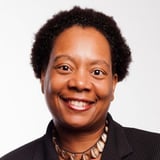Summary
The design team at BBVA Mexico, with more than 170 designers, has the challenge of bringing design to the 600+ projects the organization works on at any given time for them to better achieve the goals of each project in a user-centered way. Because of the limited capacity of the design team, this meant that many projects with design needs were left unattended, managing to solve their needs with whatever resources they had at hand. To address this, Design at Scale was born, an initiative that aims to develop design capabilities in BBVA, through tools, processes and coaching that helps teams that meet certain criteria to work under a self-management model. Through their talk Nora and Giovanna will share their journey in implementing Design at Scale at BBVA.
Key Insights
-
•
Scaling design at BVVA involved enabling developers and scrum teams to do design semi-autonomously with mentorship rather than expanding the design team endlessly.
-
•
A dedicated Design at Scale (DAS) advisor acts as a mentor and counselor to multiple scrum teams, changing the traditional designer's role to a guide rather than a doer.
-
•
Projects suitable for the self-service model typically have concrete, well-defined design objectives mostly in the surface and skeleton layers of UX.
-
•
Complex projects with abstract design needs continue to require full-time dedicated designers instead of self-service approaches.
-
•
BVVA developed design training, documentation, design systems in Figma, and templated resources to support scrum teams' autonomous design work.
-
•
Screening and continuous reassessment of projects' fit for the self-service model is critical to managing complexity and ensuring quality.
-
•
Design at Scale advisors manage high cognitive loads by balancing around a limit of approximately a dozen projects per advisor at a time.
-
•
Clear, explicit communication and agreements about the self-service process reduce confusion and align expectations with scrum teams.
-
•
The self-service model fosters a positive cultural shift, improving collaboration and understanding between developers and designers.
-
•
Ideal DAS advisors are mid-level designers with humility, strong communication, negotiation skills, and a willingness to teach non-designers.
Notable Quotes
"Design changed from focusing only on visual aspects to bringing a user-centered design process involving multiple disciplines."
"Developers started doing design themselves because they needed to, but without design principles or user feedback, which worried us."
"Why don’t we help developers do better design, rather than try to be a bottleneck or endlessly grow the design team?"
"The magic happens when the designer becomes a counselor, mentor, and guide, not just a person who designs."
"We use frameworks like the Stacy matrix and layers of user experience to filter which projects can do self-service design."
"We provide very specific packages combining design objectives and channels, like creating new user flows in the mobile app."
"One design advisor might be assigned to 12 scrum teams, which requires constantly changing mindsets across very different projects."
"It's crucial to be very explicit in communication to prevent confusion about how the self-service model works compared to traditional design."
"Even though one advisor can work with many projects, managing the cognitive load is challenging and requires setting flexible workload limits."
"Developers who worked in the self-service model sometimes ask, what can I do to become a designer? That’s been fun."
Or choose a question:
















More Videos

"A good story that people can retell is key for global communication, even if it distorts a bit."
Adam Cutler Karen Pascoe Ian Swinson Susan WorthmanDiscussion
June 8, 2016

"We don’t get upset when users say one thing and do another, but we freak out when our leadership behaves that way."
Peter MerholzThe Trials and Tribulations of Directors of UX (Videoconference)
July 13, 2023

"In the automotive industry, most safety standards only became mandatory after governments intervened."
Lisa WelchmanCleaning Up Our Mess: Digital Governance for Designers
June 14, 2018

"Transportation must evolve to be more sustainable and accessible for all."
Vincent BrathwaiteOpener: Past, Present, and Future—Closing the Racial Divide in Design Teams
October 22, 2020

"Engineers can be our biggest allies in making really important process changes."
Brenna FallonLearning Over Outcomes
October 24, 2019

"Thick data is the opposite of big data; it’s stories, qualitative, and crucial during moments of rapid change."
Tricia WangSpatial Collapse: Designing for Emergent Culture
January 8, 2024

"We aimed for research that is actionable, not just insightful or pretty to look at."
Edgar Anzaldua MorenoUsing Research to Determine Unique Value Proposition
March 11, 2021
"We manage the environment in which knowledge distribution takes place, not the process itself."
Designing Systems at Scale
November 7, 2018

"Randomization is magic — it evenly distributes confounds so the only difference affecting results is your change."
Erin WeigelGet Your Whole Team Testing to Design for Impact
July 24, 2024

















